Concepts Explained Series Introduction
Hi guys, welcome to concepts explained #1. The idea of this series it to pick apart frequently used terms and phrases used in the Hearthstone community. The goal is to provide newer players a short introduction to an idea (with that said, my definition of ‘short’ is basically something the size of ‘War and Peace’).
Comments, likes, questions are all welcome. 🙂
Today’s concept: Synergy.
Okay, let’s begin.
What is Synergy?
In economics there is a concept called utility, which is basically a fancy way of talking about “outcomes”. The better an outcome is the more “utility” we say it has.
Let’s imagine you own two objects [A,B]; How much utility do you have?
Well there are three basic possibilities: The Utility of [A.B] is either less than, greater than, or equal to the Utility of (A+B). Let’s look at each of those possibilities in more detail:
‘Synergy Neutral’
SN = U(A|B) = U(A + B)
So what does this equation say? Well, it simply says that a relationship is ‘Synergy Neutral’ (SN) when the Utility (U) of owning [A,B] exactly equals (A+B). This is actually really intuitive when you think about it; it I have one apple and then buy another apple we can say that I own two apples. Likewise, if I have a £1 coin and a £5 note I have £6 in total. A ‘Synergy neutral’ relationship most often occurs when objects [A] and [B] are independent of one another. This article doesn’t really cover Synergy neutral stuff, I give the definition merely for the sake of completeness.
‘Synergy’
S = U(A|B) > U(A + B)
Synergy (S) occurs when the Utility (U) of having owning [A,B] is greater than the sum (A+B). This is also a very intuitive way to think about synergy once you get your head round it.
For example: Suppose object [A] is a Shoe. The shoe has some value, its made of a fine leather which I could sell for scrap (5 points). Object [B] is also a shoe (of the same quality), its also worth 5 points scrapped. So altogether, I have 10 points.
But actually, I might have more than 10 points since:
Right Shoe + Left Shoe = A pair of Shoes!
…And a pair of shoes is potentially worth a lot more than the mere scrap value of [Shoe A] + the scrap value of [Shoe B].
‘Negative Synergy’ or ‘Anti-Synergy’
AS = U(A|B) < U(A + B)
That is, Anti Synergy (AS) occurs when the Utility(U) of [A,B] is less than the sum (A+B). ‘Diminishing returns’ is a another phrase that captures the nature of this relationship.
For example: Imagine we own a car and if we tried to sell it its resale value would be 5 points. In reality the car is probably worth a lot more to you than just its resale value, owning a car gives you a way to shuffle to and from work, for example. So let’s model this by saying owning one car has a utility of 10 points: Car resale value (5 points) + ability to drive to work (5 points).
Now we add another car to your collection; at first glance we might expect to have 20 points of utility (value of Car A + value of Car B). However, it should be noted that since we can always drive the first car to work we don’t get an extra ‘stack’ (if you will) of the ‘ability to drive to work’ bonus. Basically, in terms of utility the second car only adds resale value. Thus in this case [A,B] is worth 15 points, which is 5 points less than (A+B).
Okay, so that is Synergy, neutrality and anti-synergy defined. What do these things look like in Hearthstone?
Introductory HS Examples…
Example of a ‘Synergy Neutral’ Relationship:
- Hex + Fire Elemental
This is a ‘synergy neutral’ relationship since these card so not interact with each positivity or negatively. In other words, the value of having this combination of card in hard is simply equal to the value of each individual card.
Example of Synergy:
- Knife Juggler + Muster for Battle
In this case playing Knife Juggler and then the Muster gives us three flying daggers, if we play the cards in that order. As a matter of fact this relationship is easy to quantify; 3 daggers is worth about one mana since that is the cost we would otherwise have to pay for that effect (e.g. Arcane Missiles).
Muster (3 points) + Knife Juggler (3 points) = 6 points.
Knife Juggler (3 points) + Muster (3 points) = 7 points.
With this said, please take care to note that the Muster synergy is not worth exactly one mana since if you didn’t have Muster for battle in the deck you would presumably be running some other 3 mana card which may (or may not) work with Knife Juggler. Thus, the true power of the synergy between Muster and Knife Juggler is actually the difference between Muster and the second best option.
For example, let’s assume each dagger is worth 0.33 mana. Now let’s further imagine that if Muster for Battle did not exist your deck would run Harvest Golem instead. Juggler + Golem is +0.33 synergy which therefore means Juggler + Muster Synergy is only really worth +0.66 mana.
Example of a Negative Synergy:
- Sludge Belcher+Wailing Soul
In this case if play Sludge Belcher and then follow-up with Wailing Soul we lose Belcher’s Deathrattle effect. This effect is approximately worth one mana (e.g. Belecher’s Slime = Goldshire Footman).
Belcher (5 points) + Wailing Soul (4 points) = 8 points.
Wailing Soul (4 points) + Belcher (5 points) = 9 points.
Once again notice that order matters: Playing Wailing Soul before Belcher is actually a ‘synergy neutral’ relationship.
Summing up:
Okay so we have very briefly looked at the three basic outcomes a combination of cards can have. We have also observed that the order in which we play that cards matter and when trying to assess the power of any particular combination we need to compare it to the second best alternative.
Okay, so that’s the basics covered, let’s look at Synergy in more detail shall we?
Types of Synergy in Hearthstone
In my mind there is three basic types of Synergy in Hearthstone:
- “Can U Read? Synergy”
- “Strategical Synergy”
- “Curve Synergy”
‘Can U read? Synergy’ is, as the name might suggest, the really simple and obvious stuff. If you have two cards you can usually tell if they have this sort of synergy with each other simply reading the card text. ‘Strategical Synergy’ is much more subtle and cunning, it requires thought and understanding to spot. This will therefore be the longest and most detailed section of this article. Curve Synergy is all about your mana curve.
Let’s begin, shall we?
“Can U Read?” Synergy
Okay so to discover whether cards have “Can U Read? Synergy” all one (usually) has to do is read the cards.
For example, Humility is a Paladin card that reduces the targets minion attack to one, to figure that out was not rocket science; it was basic reading comprehension. Now let’s read the card text printed on Stampeding Kodo; Destroy random enemy minion with two attack or less.
And so just by reading the card text we have discovered our first combo:
- Humility + Stampeding Kodo = a 6 mana removal combination.
Although I said these sorts of combinations usually only require reading, sometimes it can take a little bit more thought and ingenuity. For example:
- Mark of the Wild + Big Game Hunter
- Mark of the Wild + The Black Knight
When you read the text of Mark of the Wild it might be tempting to think that this card is a ‘buff’ and is therefore supposed to be played on your own minions. I mean, “Why do you want to make your opponents minions better?”
As a minor side point I happen to believe that labelling cards as ‘buff’/’nerfs’ does the player a disservice since it such use of language makes it all too easy to fall into the heuristic trap of thinking “nerfs go on enemy minions and buffs go on my minions”. The problem with such black & white thinking is that it can blind players to all sorts of interesting, novel, and creative uses for cards. Instead of thinking in terms of nerfs/buff’s I would urge readers to use the more neutral term ‘effect’ when studying a card. This though, is perhaps a discussion best saved for a different day. 🙂
So okay, my minor side point should have made you realise that “Why do you want to make your opponents minions better?” was a totally misguided question to ask, a much better question would be: “Why might we want to give enemy minions + 2 attack?”
And the latter question is rather easy to answer: If the target minion has 5 or 6 attack and you give it 2 more it suddenly becomes in range of Big Game Hunter. Similarly, give that enemy minion Taunt and it becomes target-able by the Black Knight.
In conclusion, Can U Read synergy is usually fairly straightforward if you carefully read the text on cards.
Strategical Synergy
So what is strategical synergy? Well, strategical synergy is the sort of stuff that isn’t made immediately obvious just by reading the cards; it typically requires you to have a sophisticated understanding of the game.
My first two examples will hopefully make the distinction between strategical synergy and the first type:
- Velen’s Chosen + Gilblin Stalker
- Velen’s Chosen + dragonkin-sorcerer
In the case of Dragonkin Sorcerer we only need to read the card to understand how this card works alongside Velen’s chosen (in other words, this is a simple case of “Can U Read?” Synergy). But how does Velen’s Chosen work with Giblin Stalker? Notice that there is nothing printed on the card(s) that gives the answer away directly.
To understand this combination, we must understand the game: Priest wants to play a 2-drop minion so that they can buff it on curve by playing Velen’s Chosen. Any ‘normal’ two drop (e.g. Bloodfen Raptor) would probably just trade with the enemies two drop/removal, and thats a problem since dead minions cannot be the recipients of the buff in question. In a nutshell, the strategical synergy in this particular case is that the fact that Gilblin Stalker has stealth; its stealth means that there is a much higher probability the minion survives the turn which therefore means we can curve out with Velen’s Chosen and have a huge Turn Three 4/7 to play with.
Here is another (albeit similar) example:
- Force of Nature + Savage Roar
- shade-of-naxxramas + Savage Roar
In this case, we can tell how Force of Nature works with Savage Roar just by reading the cards. But how does Shade of Naxx fit into the jigsaw? Well, because Shade has stealth you can play it on any turn prior to combo. Due to the stealth it is not easily removed and thus when you finally do try to win with combo you have a extra minion (quite possibly a big minion) that can aide in the final assault.
Homework Assignment #1: Given the above two examples, how might Stranglethorn Tiger work with Shadowflame?
Okay, let’s step up difficulty. Below is two combinations, your task is: (1) to figure out which of the two combinations below has “strategical synergy” and (2) why:
- Darkbomb + Darkbomb
- Fireball + Fireball
I’ll put my answer in a spoiler with the hope that you guys might spend a minute or two thinking about this very question.
[spoiler] Ostensibly both combinations are similar (Darkbomb can be thought of as a tiny Fireball) and since the combinations are very similar you might think the strategical synergy is similar as well, but this is simply not the case. Remember that strategical synergy is all about understanding how cards are used in real games. And once we look at real games the difference becomes strikingly clear: double fireball can function as an effective win condition whereas double darkbomb (6 damage) does not.
To put it into context Fireball*2 + Hero Power is only one damage shy of a staple win condition of Druid (i.e. Force of Nature + Savage Roar).
[/spoiler]
Now let’s ramp up the difficulty up two or three notches. Your task is to figure out how the combinations below work:
- Good Target for Silence (e.g. sylvanas-windrunner) + Mortal Coil)
Against Druid:
- Good Target for Silence (e.g. sylvanas-windrunner) + Cabal Shadow Priest)
The second combination should act like a clue; ask yourself why is Cabal Shadow Priest especially useful against Druid once a prime target for Silence has been played. Once again, I’ll put the answer in a spoiler in order to give you a chance to think about it. 🙂
[spoiler] Okay so what is the Synergy here? Well, as I have stated two or three times now the key to figuring what the strategical synergy is requires you to understand the game. In this particular case you need to understand that if you play a minion that is a prime target for Silence (e.g Sylvanas, Yesra) then your opponent is often going to Silence the card if they can. And now comes the cunning part: the typical choice for most decks when is come to Silence is Ironbeak Owl. And what do we notice about Ironbeak Owl? well, it turns out that Owl is a fairly good target for a Mortal Coil.
Ah, but what about Druid? In this case things are different, Mortal Coil doesn’t really work here since Druid likes to Silence things not with Owl but with Keeper of the Grove. And what do we notice about Keeper? Its the perfect target for Cabal Shadow Priest!
As a side note, notice how few minions Druid typically runs are vulnerable to Cabal Shadow Priest; Shade of Naxx has stealth so you can’t steal that and cards like darnassus-aspirant is not a good steal choice either. If the Druid runs Druid of the Flame then they can always play-around your Cabal by making it a 5/2, and stealing Zombie Chow is potentially a 10 point life swing in the favour of Druid!
Basically, in lots of Druid vs Priest Match-ups Cabal Shadow Priest often struggles to get value simply due to the way the ‘average’ Druid deck is built. Keeper of the Grove is typically the best target for Cabal and smart Druid players know this. Therefore, if the Priest wants to steal a Keeper of the Grove you often have to force the Druid into playing the Keeper via cunning play. In this particular case, throwing out a good Silence target is a big juicy worm on a hook, and if the Druid takes the bait you get value out of the Cabal.
In other match-ups meanwhile, the strategical synergy is between Silence Target + Cabal less strong, owing the fact that Ironbeak Owl is how most other decks chose to Silence minions and that Owl often isn’t the best thing to steal (e.g. Against Hunter you would probably prefer to steal a Haunted Creeper or a Leokk (from Animal Companion).
For regular readers of my articles, this stuff may sound familiar, and that would probably be because I have spoken about this stuff before (see here).
[/spoiler]
Alright, that example is probably a bit of a mind-fuck for some of you, so let’s wrap this section up by dropping the difficulty back down a few notches. This example should be particularly useful for all those Arena aficionados out there:
- Blizzard/Frost Nova + Flamestrike
My answer is once again hidden in a spoiler. 🙂
[spoiler]So this should be pretty simple stuff, Blizzard and Frost Nova are really good at setting up a big Flamestrike. E.g. if the enemy has five 5/5 minions on board then Blizzard freezes all of them and does two damage, meaning that the Turn Seven Flamestrike is now able to completely clear the board. In many cases the Freeze effect is every bit as important as the two damage, since Frozen Boards cannot be used to push damage (e.g. the Freeze effect from Frost Nova/Blizzard prevents the opponent from winning with a huge Bloodlust).
[/spoiler]
Okay, so that is I think a pretty good introduction to ‘strategical synergy’. As you get better and better as a player you will learn more and more about how complex, confusing, and deep this particular rabbit hole is. It is also worth making explicit that this sort of synergy isn’t limited just to deck-building, rather, this is a concept that can be applied during games to inform your play-decisions as well.
In the next section we shall look at “Curve Synergy”
Curve Synergy
Okay so what is it? Well, Curve Synergy is basically related to when combos become available to you.
The simplest example of ‘Curve Synergy’ is trying to draw cards in order to find something. Let’s for the sake of example suppose there is an enemy 8/8 on board and you currently have no cards in hand to deal with it. But, your deck does run a Big Game Hunter, and you do have card draw in your hand.
An obvious synergy your deck has is “Card draw —> Draw answer“. But the card draw itself costs mana and so does the answer you aim to draw into. And so therefore this combination doesn’t work until you have the required mana.
So let’s Suppose you really need to draw Big Game Hunter this turn to win the game. And your card draw options are Azure Drake and Ancient of Lore. What one you should play depends on how much mana you have available:
- Seven (or less) Mana: Neither Azure Drake or Lore work since even if you draw BGH you won’t have the mana to play it.
- Eight Mana: Azure Drake is better (5+3 = 8). If you draw with Lore you would need to draw both Innervate AND BGH (7+3 > 8).
- Nine Mana: Azure Drake is still better.
- Ten Mana: Ancient of Lore is better since it offers you two chances to draw BGH (as opposed to the one chance Drake provides).
The gist of my point is that BGH + Lore is a pretty strong combo, but it doesn’t work on Turns 7-9 (without Innervate), it only works with 10 mana.
A simple tip I have for budding deck-builders is that when you are building Druid decks that contain Ancient of Lore it is often good practice to squeeze in 3 mana Tech-cards (e.g. BGH) because it gives your deck a Turn 10 ‘power spike’. Meanwhile, 3 mana tech-cards don’t do as well in Control Paladin, owing to the fact that their main card draw engine costs 8 mana (i.e. Lay on Hands).
As another example, You might like the idea of Adding Azure Drake to your Priest deck because it gives you powerful options like Turn 10 Drake + Sludge Belcher or Holy Nova but after play-testing you might discover that Gnomish Inventor is better since on Turn 10 you can dig for Lightbomb, Windrunner, or Cabal Shadow Priest (as well as the 5 mana cards).
Another little tip I have for you deck-builders is that when you are thinking about these combinations Turn 10 is the most important (for control decks), and that’s because you only play one Turn with 1-9 mana, but you can spend several turns ‘stuck’ at 10 mana. Ergo, ten mana combos have more opportunities to be useful.
This style of thinking is not limited to just card draw. For example: What are the best targets for Duplicate?
At first glance you might think S. Windrunner is a pretty good target to get duplicated. But that is not always true, once you hit 10 mana you might find that (unless your deck also has lots of good 4 mana (or less) cards that Windrunner ends up being a bit ‘clunky’ and possibly ‘too slow’). Meanwhile, duplicating a 5-drop potentially gives you a really strong Turn 10 since you can play them both at the same time.
- Duplicating 6+ drop = no natural power spike without the help of supporting cards
- Duplicating Sludge Belcher = Turn 10 power spike
- Duplicating Water Elemental = Turn 8 power spike.
- Duplicating Flamewaker = Turn 7 power spike (e.g Flamewaker x2 + Spare Part = 4 random damage ).
- Duplicating Explosive Sheep = Turn 6 power spike (e.g. Explosive Sheep x2 + Hero Power = quasi-Flamestrike).
- …and so on…
The take home message here is that duplicating the biggest and baddest thing in your deck might not always be the best play, duplicating smaller things can give you power spikes earlier in the game and that maybe more useful. If you plan on running Duplicate in your Mage deck then I would suggest you think about all the sorts of things that can get duplicated and then consider when (and how) those minions could be useful to you.
Okay guys I’m almost done! Just one short section on Negative Synergy and a discussion of spider webs remains.
Excited? No, me neither. 🙂
Negative Synergy
Alright, so at the very beginning of this guide I explained what negative synergy was, in this section I have just one aim: I want you to understand that it is okay to add cards that don’t work well together, so long as you know what you are doing.
For example, check out this deck building guide for my Wailing Soul (a.k.a “Jack Frost”) Druid Deck. In this deck the overwhelming majority of cards work well with Wailing Soul (e.g. Fel Reaver,Ancient Watcher,Ogre Brute, etc), but there is an obvious sore thumb sticking out: Sunfury Protector and Azure Drake both have negative Synergy with Wailing Soul.
Negative Synergy is not something you want to much of in your deck but a little bit of it is usually fine. In this case, the primary reason for including Azure Drake was because I wanted card draw, thus I didn’t really consider losing Spell Damage to be a big deal. In the case of Sunfury Protector, Wailing Soul removes the taunt but I was okay with this since I thought that Ancient Watcher + Sunfury Protector synergy added more to the deck than the negative Synergy subtracted. Choosing Sunfury Protector over defender of Argus was my attempt to mitigate the potential Wailing Soul downside.
And also never forget that I can avoid a lot of this negative synergy simply by carefully considering the order in which I play my cards.
Second example (Handlock):
- Molten Giant, lord-jaraxxus, Antique Healbot
These cards above are regularly ran in Handlock, and notice how uncoordinated these cards seem at first glance; Molten Giant doesn’t really work to well with Jaraxxus since once you transform the Giants are virtually unplayable. Meanwhile, Healbot seems to run counter to the idea of getting the Giants out early.
But all the negative synergy mentioned above is mostly brushed away via smart play: By transforming into Jaraxxus after you play the Giants you avoid the first problem I mentioned. And moreover, it might look like Healbot doesn’t work the the Giants but in a way they do; Warlock needs to take about 15 or so damage in a game in order to take value out of the Giants. If you take much more damage than that then sure you can get them out for cheap but you will probably die next turn anyway. This is where Healbot kicks in: clever use of this card allows the Warlock to carefully manage his dissent; yes the Warlock wants to drop to low life but it is important that this doesn’t happen too quickly and moreover once you reach low life you want to be able to be able to ‘leap frog’ out of danger.
In short, these two decks demonstrate that a little bit of Negative Synergy is fine, so long as you think carefully about what you are trying to achieve.
Okay, one more section to go; Spider webs!
Spider Webs
As you build and play with decks you will probably start to realise that synergy (in good decks) often forms a web of interaction. For example:
- Circle of Healing + Northshire Cleric
- Circle of Healing + light-of-the-naaru
- Circle of Healing + auchenai-soulpriest
- Circle of Healing + Injured Blademaster
- Inured Blademaster + Northshire Cleric + Hero Power
- Injured Blademaster + Holy Nova
- Northshire Cleric + Holy Nova
- Light of Naaru + Holy Nova
- Light of Naaru + Holy Nova
- Light of Naaru + Auchanai SoulPriest
- Light of Naaru + Injured Blademaster
In this example we have 5 cards all coming together to get a complex web: Circle of Healing with Auchenai is board clear but the circle card also works with Injured Blademaster to provide a Turn Three tempo boost, with Northshire Cleric it generates a lot of card draw and with Light of Naaru it can create a huge Lightwarden. In short a very situational card is made consistently useful by not only sheer number of cards it has synergy with but also the variety of uses it has is important as well: Circle of Healing really is the ‘Swiss Army Knife’ of Hearthstone.
But there is a problem; you can’t just add a bunch of cards that work with circle of Healing to the deck and be done with it. Rather, all the cards that work with circle of healing have to be in themselves useful. For example, if the only synergy Injured Blademaster had in a Priest deck was Circle of Healing it would have been cut from the deck a long time ago. But as it turns out, Injured Blademaster also works well with Northshire Cleric, Light of Naaru, Priest Hero Power and so on.
With 6 cards we have 11 interactions. But this isn’t the full ‘synergy web’! For starters, the list above doesn’t mention Strategical Synergy (e.g. Velens Chosen with Gelblin Stalker) or Curve Synergy. There are also more ‘Can U read?’ Synergies I could have listed as well; e.g. Zombie Chow works nicely with Auchanai Soulpriest.
Homework Assignment #2: Your task to think about what ‘Grim Patron Warrior’s’ synergy web looks like.
When trying to add Synergy webs in your deck you need to think about the power-level of all the combinations you want to use and ask yourself whether they are ‘good enough’. Combo’s might not work for a number of reasons; sometimes it will simply be because one (or both) of the cards are individually weak and/or very situational, or because the combo is ‘win more’ (e.g. minion + Bloodlust + Windspeaker), or because it takes multiple turns to set up or because it is in some way strategically misguided.
What might a strategically misguided synergy look like?
Well, let’s imagine a ‘synergy web’ for Druid that looks a little like this:
- Force of Nature + Savage Roar
- Force of Nature + Wailing Soul
- Force of Nature + Cult Master
- … other synergies (4…n)
In the case of Cult Master + Force of Nature you get 3 card draw (nice!), in the case of Wailing Soul you get three 2/2’s on the board (also nice). So What’s the problem? Well, the primary problem is that the first synergy on the list is often a Druids deck win condition. In other words, the Force of Nature + Savage Roar synergy is a lot more important that the other two combinations. So important in fact, we might consider using the powerful Force of Nature card on Cult Master to quite literally be a ‘waste’ of the former card.
The second problem requires a bit more insight to see. In the case of Cult Master suppose the opponent has a 7/6 on board and we run our 3 2/2’s into the minion. At the end of the turn we have a 4/2 on board and drew three cards. This sound good until you realise that you only have a 4/2 on board at the end of Turn 10! Generally speaking, this board is probably nowhere near powerful enough to win the game. Compare the lack of tempo this combination generates versus Ancient of Lore + Big Game Hunter. For one less card draw we have a 5/5 AND a 4/2 on board.
In short, having just a 4/2 on the board at the end of Turn 10 is probably far too weak in terms of tempo/board control to be a viable combo at high-levels of play: Ancient of Lore is just better.
As for the potency of Wailing Soul + Force of Nature. Well, as I have stated in previous articles:
[spoiler title ='”The value of silencing those little angry trees.”‘]
[…]
Question 1) What is the theoretical value of Force of Nature + Wailing Soul?
Question 2) What is the practical value of Force of Nature + Wailing Soul?
My Answers:
1) Theoretical value = 3/5 + 2/2 *3 minions on board.
2) Practical value = a lot less than that.
Let’s unpack answer (2) a bit; The Wailing Soul + Force combo is 10 mana. This basically means that we are playing this combo when we could otherwise be playing Savage Roar + Force. So straight away we see a potential difficultly; by going for the Wailing Soul combo we are potentially forgoing a game winning Force + Roar combo. Thus, in many cases where you have the Wailing Soul + Force combo in hand you are probably going to end up playing Ancient of Lore instead (hoping to draw into that Savage Roar, no doubt).
It is actually worse than this however. Stop and think for a second about how Force of Nature is actually used; if is not used for fatal damage then it is typically used to clear the enemy’s board, which means most of those 2/2’s are going to die before the end-of-turn ability triggers. Ergo, there is nothing left to Wailing Soul. If we go face with force then sure, we get Wailing Soul value, but the point is that in most cases that would be a sub-optimal use of Force of Nature.
[spoiler]
Long story short: Force of Nature + Wailing soul is not a very potent combo to have in the deck.
[/spoiler]
Okay so lets sum up this section: When building decks you often don’t have a handful of unrelated combo’s, rather, you add a bunch of cards that form a ‘web’. These webs are really important since they give a deck flexibility, consistency, and redundancy. But with that said, you cannot add a bunch of weak combo’s to your deck and expect it do well. Web-like structures are inherently strong, but in order to for your web to stand tall you need to build it out of steel, not candy floss (random trivia fact: Spider Silk actually has a higher tensile strength than that of steel).
Conclusion
So there you have it folk! A fairly comprehensive guide to Synergy in Hearthstone.
Don’t forget to like, comment, ask questions, and tell me how handsome I am. 🙂
Other Episodes In Series
- Episode #1: Synergy (you are here)
- Episode #2: Playing-Around Threats
- Episode #3: Playing to Win / Playing to Not Lose





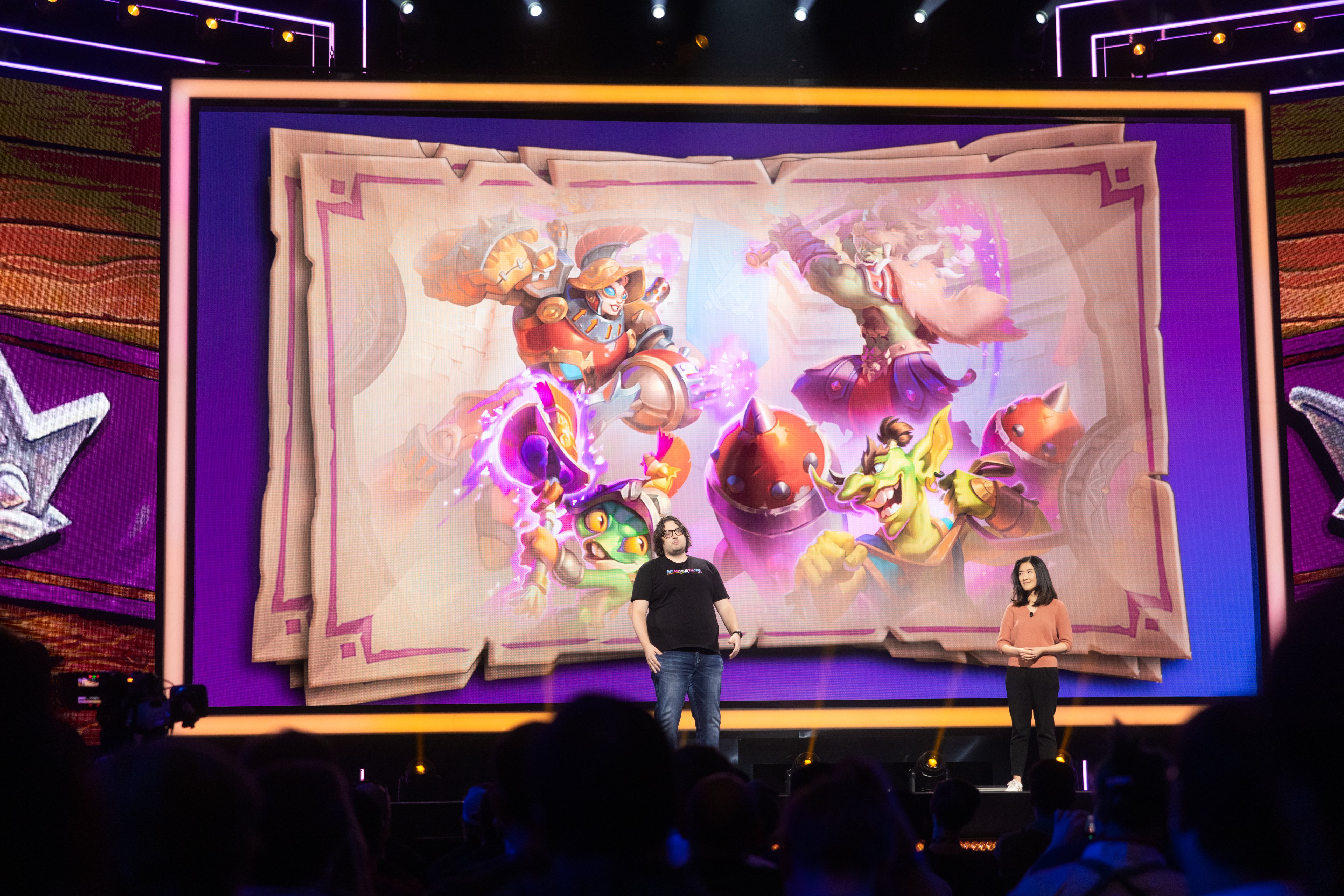
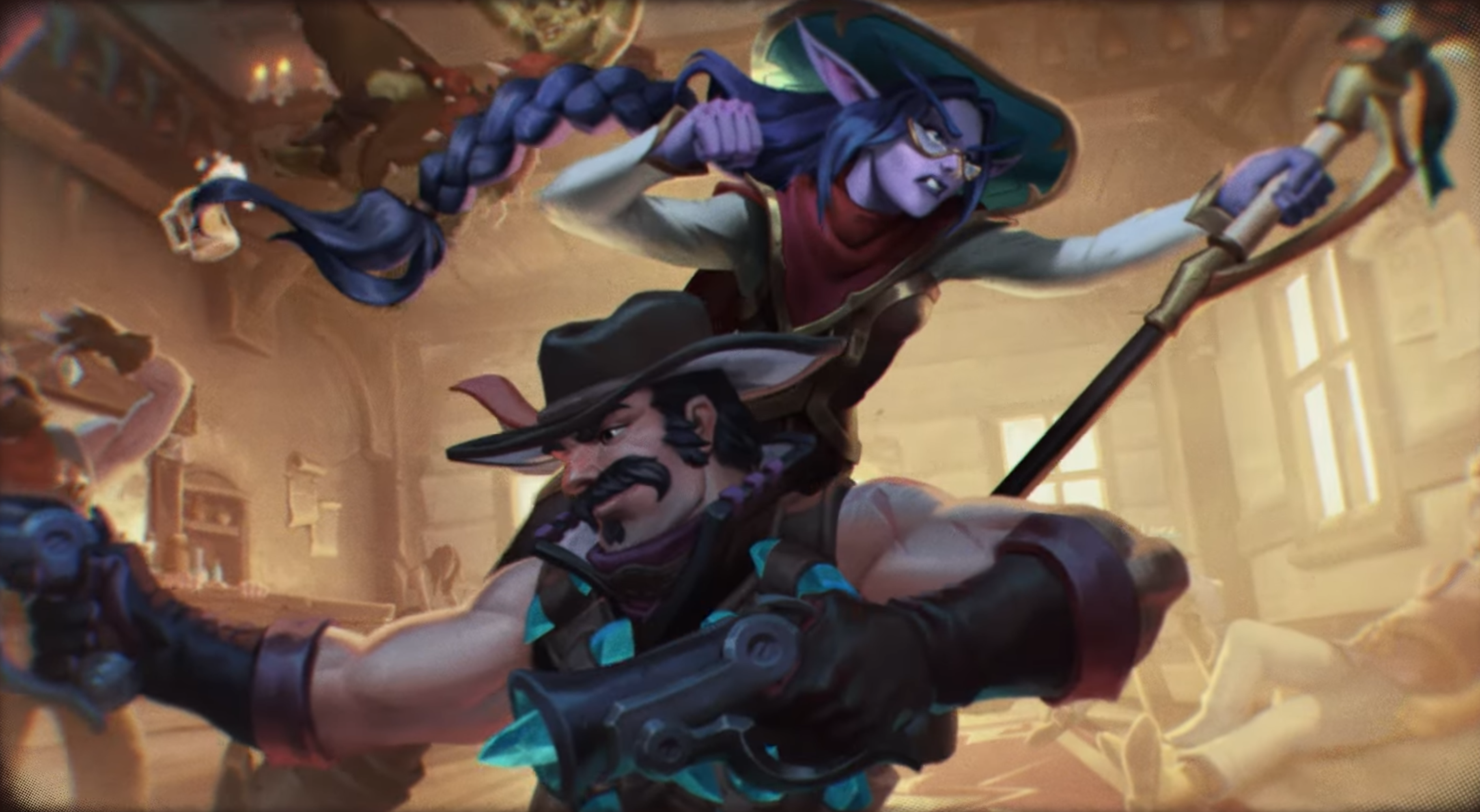
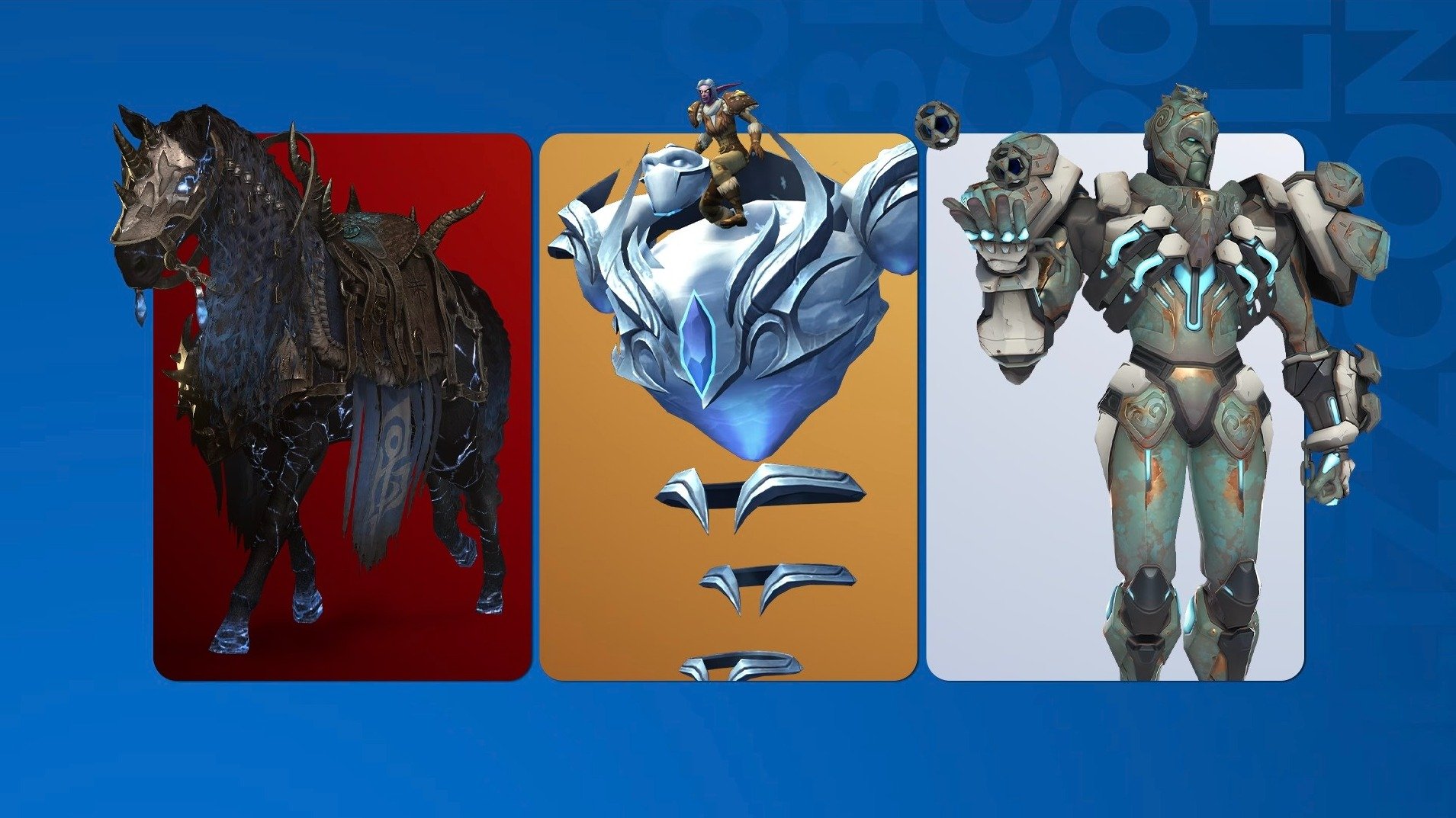
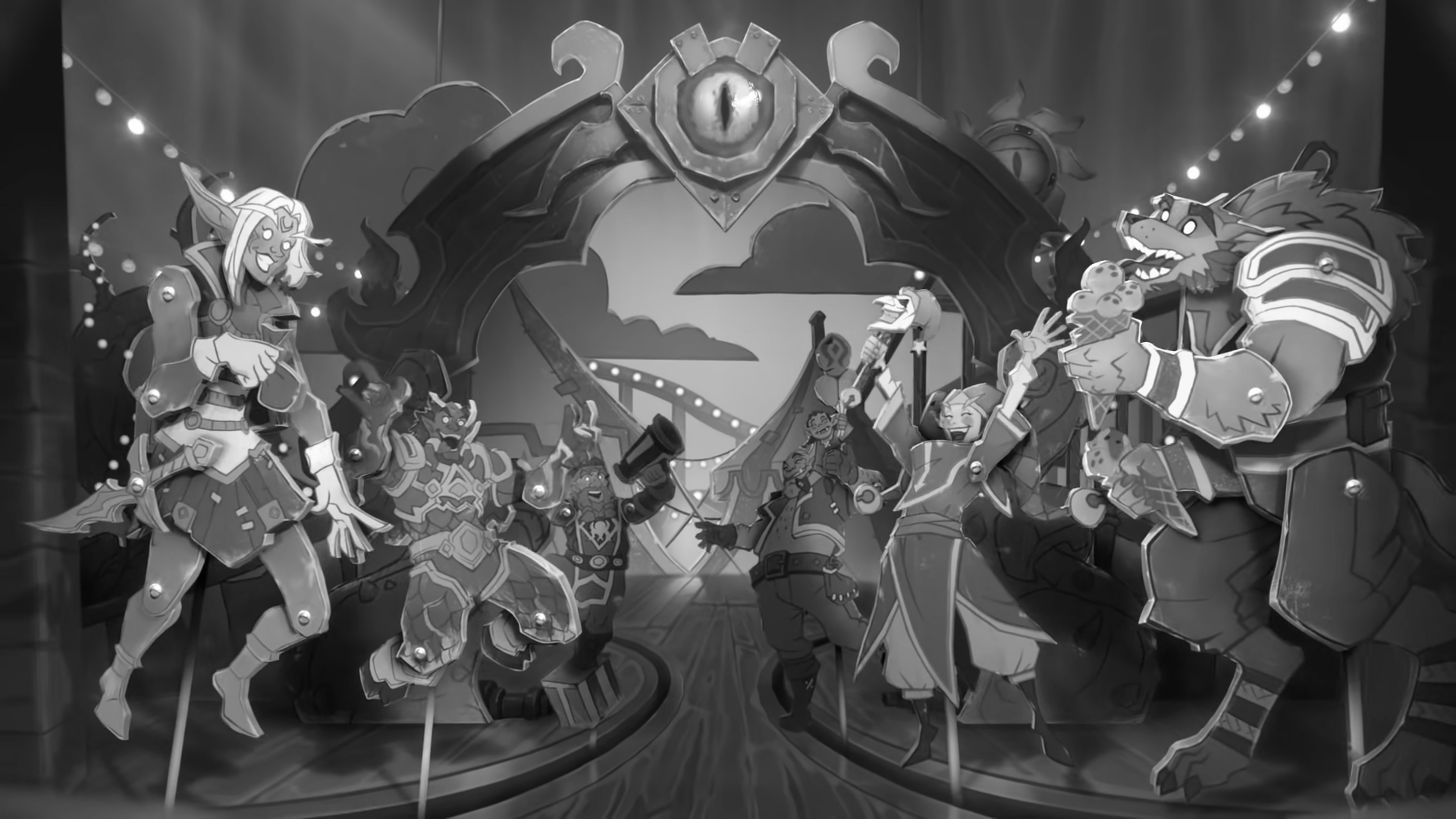
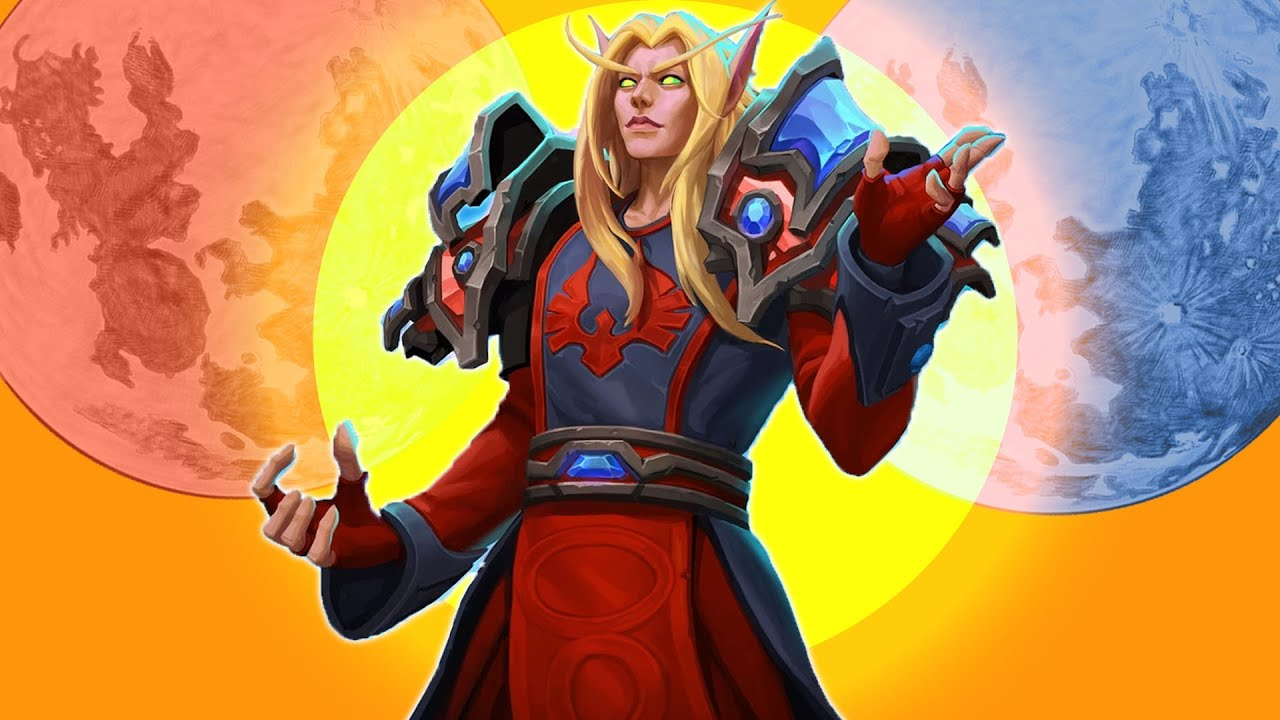
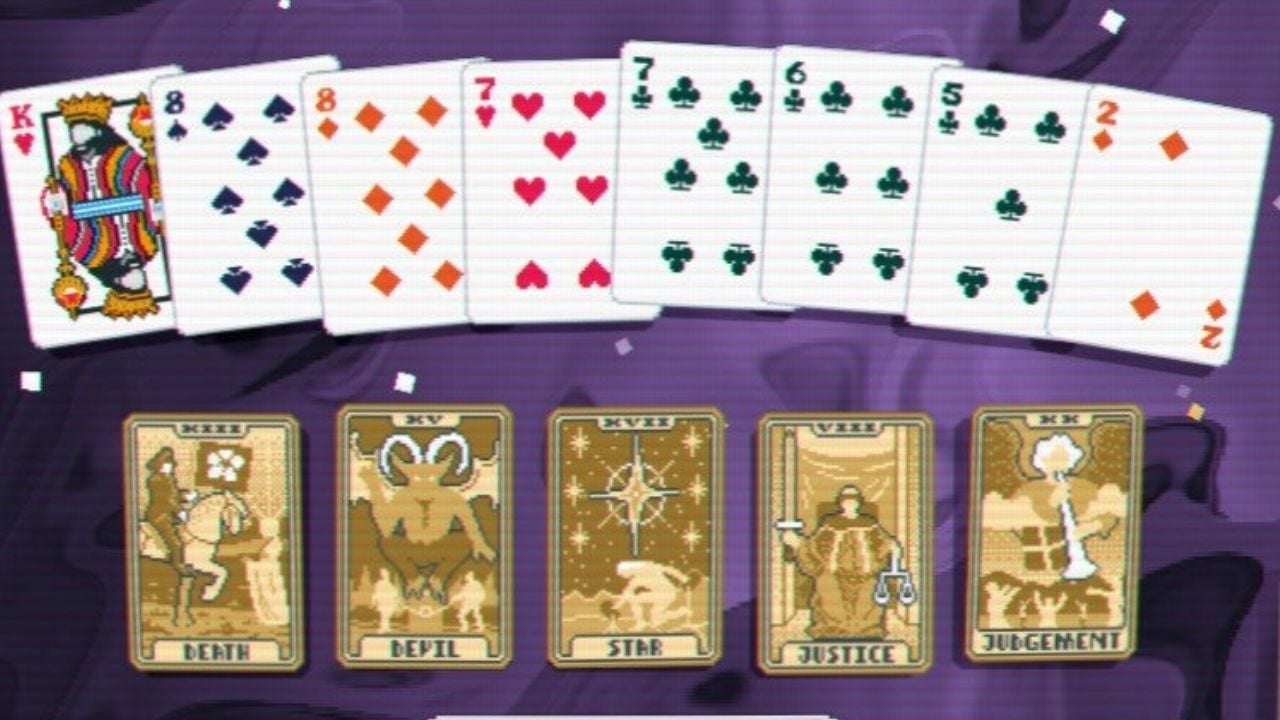
Published: Sep 4, 2015 08:01 am